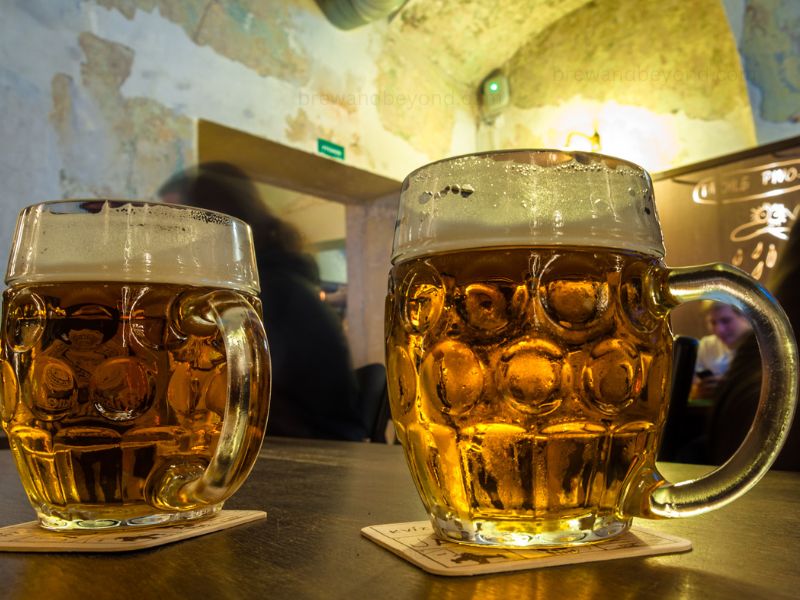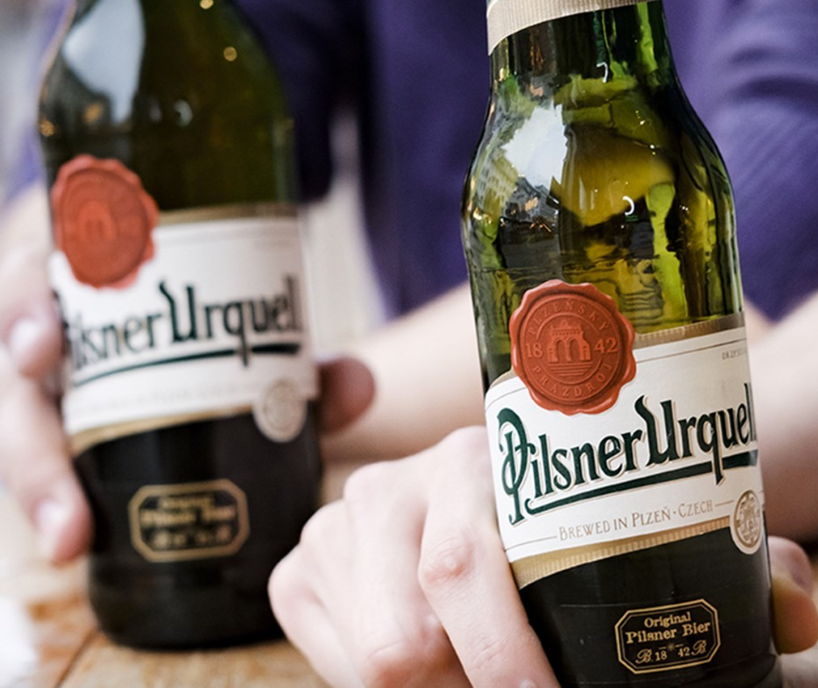Imagine walking into a vibrant Czech pub, where the air is filled with lively conversations and the clinking of glasses. As you approach the bar, your eyes settle on a gleaming, golden pint of beer. It’s the legendary Czech Pilsner, renowned for its exceptional quality and unrivaled taste. In this article, we will unveil the secrets behind its success and explore why the Czech Pilsner has earned its rightful place as the gold standard in the world of beer. So, sit back, relax, and prepare to be delighted by the captivating history and unparalleled craftsmanship of this beloved beverage.
History of Czech Pilsner
The history of Czech Pilsner dates back to the 19th century in the city of Plzeň, located in what is now the Czech Republic. It was during this time that the citizens of Plzeň grew tired of the inconsistent quality and flavor of the beer being produced in the region. In their quest for a better beer, they decided to build a new brewery and create a beer that would meet their high standards.
Origin of Czech Pilsner
The origin of Czech Pilsner can be traced back to the year 1838, when the citizens of Plzeň established the Burghers’ Brewery. They enlisted the services of a Bavarian brewmaster named Josef Groll to develop a new beer recipe. Groll’s creation was a revelation – a light, golden beer with a crisp, clean taste that was unlike anything that had been seen before.
Introduction of Pale Lager
The introduction of pale lager marked a turning point in the history of beer brewing. Prior to the development of pale lager, most beers had a dark, heavy appearance and a malty flavor. The creation of pale lager introduced a new style of beer – one that was light in color, refreshing, and had a distinct hop bitterness. This new style quickly gained popularity and set the stage for the rise of the Czech Pilsner.
Innovation and Perfection
Over the years, the brewing techniques for Czech Pilsner evolved and were refined to achieve perfection. Breweries in Plzeň began to adopt the use of bottom-fermenting yeast, which allowed for a longer, cooler fermentation process. This resulted in a beer that was much cleaner and crisper in taste. The innovation and dedication to perfection led to Czech Pilsner becoming the gold standard in the beer industry.
Characteristics of Czech Pilsner
Distinctive Appearance
One of the defining characteristics of Czech Pilsner is its distinctive appearance. It pours a brilliant golden color with exceptional clarity, showcasing the use of high-quality ingredients and precise brewing techniques. The beer is often topped with a thick, creamy white head that adds to its visual appeal.
Aroma and Taste Profile
Czech Pilsner is renowned for its balanced aroma and taste profile. It offers a delicate yet noticeable hop aroma, which can range from floral and spicy to herbal and earthy, depending on the hop varieties used. The malt backbone provides a subtle sweetness and biscuity notes that complement the hops. The overall taste is clean, crisp, and refreshing, with a moderate bitterness that leaves a lingering, pleasant aftertaste.
Mouthfeel
In terms of mouthfeel, Czech Pilsner is known for its light to medium body, making it highly drinkable. It has a moderate carbonation level that enhances the beer’s crispness and ensures a smooth, effervescent experience. The mouthfeel also showcases the beer’s smoothness and cleanliness, leaving a refreshing sensation after each sip.
Brewing Process
Selection of Ingredients
The brewing process of Czech Pilsner begins with a careful selection of ingredients. Pilsner malt, a type of pale malt, is the star of the show, providing the beer with its signature golden color and clean malt flavor. This is complemented by the use of Czech hops, which impart the distinct hop character and balanced bitterness that Czech Pilsner is known for. Additionally, the choice of water used in brewing plays a crucial role in achieving the desired flavor profile.
Mashing and Fermentation
After the ingredients are selected, the brewing process continues with mashing and fermentation. During mashing, the malt is crushed and mixed with hot water to activate enzymes that convert the starches into fermentable sugars. The resulting liquid, known as wort, is then separated from the spent grain and transferred to a fermentation vessel.
In Czech Pilsner brewing, bottom-fermenting yeast is employed, also known as lager yeast. This type of yeast ferments at cooler temperatures, typically around 10-12°C (50-54°F), for an extended period of time. This slow fermentation process allows the yeast to slowly convert the sugars into alcohol and produces a clean, crisp flavor profile.
Lagering
Lagering is a crucial step in the brewing process of Czech Pilsner. After primary fermentation is complete, the beer is transferred to a secondary vessel and stored at cold temperatures, usually near 0-4°C (32-39°F), for an extended period, typically several weeks or even months. This process, known as lagering, allows flavors to mellow, the beer to clarify, and any remaining yeast and sediment to settle. The result is a beer with exceptional clarity, smoothness, and improved stability.
The Role of Water
Water in Czech Pilsner
Water plays a significant role in the brewing of Czech Pilsner. The unique mineral composition of the water in the Plzeň region, specifically soft and low in minerals, contributes to the overall character of the beer. Soft water enhances the sweetness of the malt and allows the delicate hop flavors to shine through.
Influence on Flavor
The mineral content of the water can greatly influence the flavor of the beer. In the case of Czech Pilsner, the soft water allows for a balanced flavor profile, with a focus on the malt and hop characteristics. It helps to create a crisp and clean taste that is characteristic of this beer style.
Effect on Brewing Process
The water used in brewing also affects the brewing process itself. The absence of certain minerals can impact the enzymatic activity during mashing, which can affect the conversion of starches to fermentable sugars. Additionally, the mineral content can influence the pH level of the mash, affecting the extraction of flavors from the malt and hops. Czech Pilsner breweries carefully analyze and adjust their water composition to achieve the desired flavor and brewing efficiency.
Traditional Czech Ingredients
Czech Hops
Czech Pilsner is renowned for its use of high-quality Czech hops. The two most famous hop varieties used in Czech Pilsner are Saaz and Žatec. Saaz hops are known for their delicate aroma, providing a mild floral and spicy quality. Žatec hops, on the other hand, contribute a more pronounced herbal and earthy character. The combination of these hops creates the perfect balance of bitterness and flavor in Czech Pilsner.
Barley Malt
Pilsner malt, a pale malt with low color and mild sweetness, is predominantly used in Czech Pilsner brewing. It provides the beer with its characteristic golden color and contributes a light, bready flavor. The use of high-quality barley malt ensures that Czech Pilsner has a clean, crisp taste that allows the hops to shine.
Yeast Strains
Bottom-fermenting yeast strains, also known as lager yeast, are the traditional yeast strains used in Czech Pilsner brewing. These yeast strains ferment at lower temperatures, resulting in a slower fermentation process that allows for the development of the beer’s distinct flavor profile. The yeast also plays a crucial role in the beer’s clarity and clean finish.
Pilsner Urquell: the Original Czech Pilsner
Historical Significance
Pilsner Urquell holds a special place in the history of Czech Pilsner as the original and iconic beer of this style. It was first brewed in 1842 at the Burghers’ Brewery in Plzeň, where it was enjoyed by the citizens and gained popularity far beyond the city’s borders. Pilsner Urquell became the benchmark for Czech Pilsners and set the standard for quality and taste.
Uniqueness in Taste
Pilsner Urquell stands out for its exceptional taste, combining a well-balanced hop bitterness with a clean malt background. The Saaz hops used in its brewing lends the beer a distinctive spicy and floral character, while the soft Plzeň water contributes to its smoothness and drinkability. The original recipe of Pilsner Urquell continues to be cherished and respected, ensuring a truly unique taste experience.
Trademark Characteristics
Pilsner Urquell is known for its trademark characteristics that have become synonymous with Czech Pilsner. Its deep golden color, crystal clear appearance, and dense white head are instantly recognizable. With each sip, the beer showcases the perfect harmony of flavors, including the light malt sweetness, the noble hop character, and the clean, dry finish. Pilsner Urquell remains a benchmark for craftsmanship and taste in the world of beer.
Food Pairings with Czech Pilsner
Classic Czech Dishes
Czech Pilsner pairs wonderfully with classic Czech dishes, which often feature-rich and flavorful ingredients. The clean, crisp nature of the beer helps cleanse the palate and complement the hearty flavors. Examples of classic Czech dishes that pair well with Czech Pilsner include roast pork with dumplings and sauerkraut, beef goulash, and traditional Czech sausages.
International Cuisine
Czech Pilsner also harmonizes with a wide array of international cuisine. Its mild hop bitterness and smooth malt profile make it an excellent companion to a variety of dishes. It pairs particularly well with grilled or roasted meats, seafood, spicy Asian cuisine, and Mediterranean dishes.
Cheese and Appetizers
The refreshing qualities of Czech Pilsner make it an excellent choice to accompany cheese and appetizers. The beer’s balanced bitterness and crispness complement a range of cheeses, from soft and creamy brie to sharp and aged cheddar. Additionally, Czech Pilsner can enhance the flavors of appetizers such as bruschetta, shrimp cocktail, and vegetable crudité.
Global Popularity and Recognition
Exportation of Czech Pilsner
Czech Pilsner’s popularity has transcended its home country, gaining international recognition and becoming a highly sought-after beer style around the world. Breweries in the Czech Republic, such as Pilsner Urquell, have played a significant role in exporting their prized beer and introducing people worldwide to the authentic taste of Czech Pilsner. Today, Czech Pilsner can be found in many countries, enjoyed by beer enthusiasts and connoisseurs alike.
International Awards
The excellence of Czech Pilsner has been acknowledged and celebrated through numerous international beer awards. Pilsner Urquell, in particular, has received prestigious accolades for its superior quality and adherence to traditional brewing methods. These awards further solidify Czech Pilsner’s position as a gold standard in the beer industry and as a true masterpiece of craftsmanship.
Embraced by Craft Brewers
Czech Pilsner has also been embraced by craft brewers worldwide, who have been inspired by its distinctive characteristics and rich history. Craft breweries incorporate Czech Pilsner into their lineup, often adding their own creative twists and interpretations. This has resulted in a resurgence of interest in the style and a growing appreciation for its unique flavor profile.
Variations of Czech Pilsner
German Pilsner
German Pilsner, often referred to as “Pils,” shares similarities with Czech Pilsner but has its own distinct characteristics. German Pilsner showcases a slightly more prominent hop bitterness, with a focus on the robust and aromatic hop varieties. The malt profile tends to be drier and lighter, providing a crisp and refreshing drinking experience. German Pilsner is beloved in its own right and has gained popularity worldwide.
American Pilsner
American Pilsner blends American brewing methods and ingredients with inspiration from both German and Czech Pilsners. American Pilsners frequently include some of the robust hop varieties cultivated in the country, giving them a more noticeable hop profile. Compared to Czech or German Pilsner, the malt backbone of this beer is usually lighter, allowing the hops to shine. American Pilsners are a crisp, forward-thinking twist on the traditional Pilsner style.
International Adaptations
Czech Pilsner has served as a blueprint for many international adaptations of the style. Breweries around the world have drawn inspiration from its characteristics and techniques, creating their own unique interpretations of Pilsner. These adaptations often reflect regional ingredients, brewing traditions, and consumer preferences, resulting in a diverse range of Pilsner styles that maintain the essence of Czech Pilsner while showcasing local influences.
Appreciation and Future of Czech Pilsner
Resurgence of Craftsmanship
In recent years, there has been a resurgence of appreciation for traditional brewing craftsmanship, and Czech Pilsner has played a significant role in this movement. Beer enthusiasts and craft brewers alike are rediscovering the art of brewing a classic Czech Pilsner, embracing its rich history, and respecting the time-honored techniques that make this style so revered.
Innovation and Experimentation
While Czech Pilsner remains grounded in tradition, there is also room for innovation and experimentation within the style. Craft brewers continue to push the boundaries of what is possible with Czech Pilsner, exploring new hop varieties, incorporating unique ingredients, and experimenting with aging and fermentation techniques. This ongoing innovation ensures that Czech Pilsner will continue to evolve and excite beer lovers for years to come.
Continued Popularity
Czech Pilsner’s popularity shows no signs of waning, with a growing number of beer enthusiasts seeking out the authentic taste and craftsmanship of this style. Whether enjoyed in its traditional form or in creative adaptations, Czech Pilsner continues to captivate drinkers with its crispness, balance, and refreshing qualities. As long as there are individuals who appreciate exceptional beer, Czech Pilsner will hold its place as the gold standard in the world of brewing.
© 2023 by brewandbeyond.com. All rights reserved. No part of this document may be reproduced or transmitted in any form or by any means, electronic, mechanical, photocopying, recording, or otherwise, without prior written permission of brewandbeyond.com.




